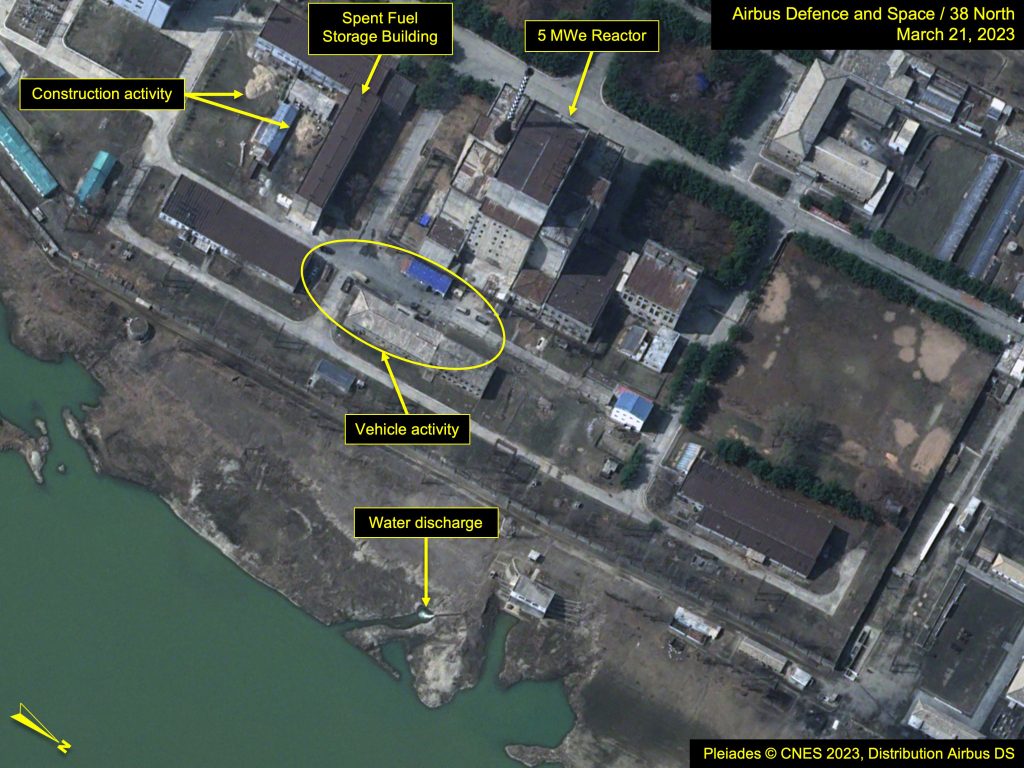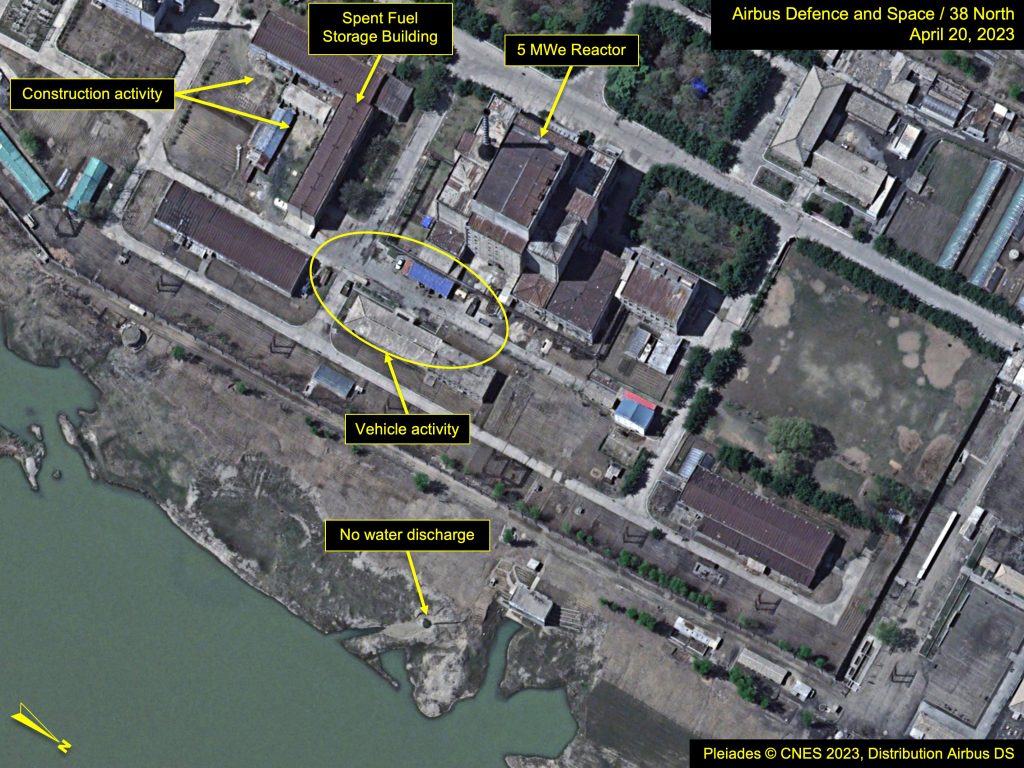Possible Refueling at Yongbyon’s 5 MWe Reactor
Recent commercial satellite imagery of North Korea’s Yongbyon Nuclear Scientific Research Center indicates that cooling water discharge—observed with a few short interruptions at the 5 MWe reactor over the past 23 months—ceased in early April, suggesting that the reactor has likely been shut down. If this was done for refueling purposes, the removed spent fuel could soon be sent for reprocessing. Given how long the reactor has been running, this could amount to some 5-8 kilograms of new weapons-grade plutonium, once separated, to add to the country’s fissile material stockpile.
Recent Activity
Figure 1a. Close up of 5 MWe Reactor area on imagery from March 21, 2023. Image Pleiades NEO © Airbus DS 2023. For media options, please contact [email protected].; Figure 1b. Close up of 5 MWe Reactor area on imagery from April 20, 2023. Image Pleiades NEO © Airbus DS 2023. For media options, please contact [email protected].
The 5 MWe reactor has been operating since July 2021. While there have been brief periods in the interim with no visible discharge, those instances are likely due to maintenance activities as the stoppage only lasted a couple of days each time. Earlier irradiation campaigns lasted about two years, but North Korea may have opted for a slightly shorter period this time to produce lower burnup plutonium, which is more suitable for nuclear weapons. Lower burnup is also desirable for nuclear weapons, as reflected in discussions between North Korean operators and Dr. Siegfried Hecker.
The 5 MWe Reactor is an on-load reactor, which does not require a cease in operations to refuel. However, North Korea has historically opted to shut down the reactor during refueling campaigns to perform maintenance. The greater vehicle presence and movement around the reactor in recent weeks could indicate maintenance activities are underway.
Construction is also underway at the adjacent Spent Fuel Storage Building, although less extensive than previously reported. The nature of this work cannot be established from satellite imagery alone, but does not seem large-scale, indicating that fuel discharge and storage could take place soon.
Depending on the operational parameters of the reactor, North Korea could have enough spent fuel that when reprocessed, will produce up to 5-8 kilograms of new plutonium to add to the country’s fissile material stockpile. Cooling will take a couple of months before reprocessing can commence, making monitoring of the Radiochemical Laboratory (RCL) important in the near-term. While there are no current indicators of activity at the RCL[1], smoke coming from the stack at the Thermal (Steam) Plant, which provides necessary steam for the processes at the RCL, would be a key indicator that a new reprocessing campaign was about to begin.
- [1]
At the Spent Fuel Receipt Building within the RCL complex, limited construction activity is visible on imagery dated April 20, 2023. If the activity is related to modifications for future ELWR fuel, doing so before a reprocessing campaign when the area is less radioactive would be beneficial.


